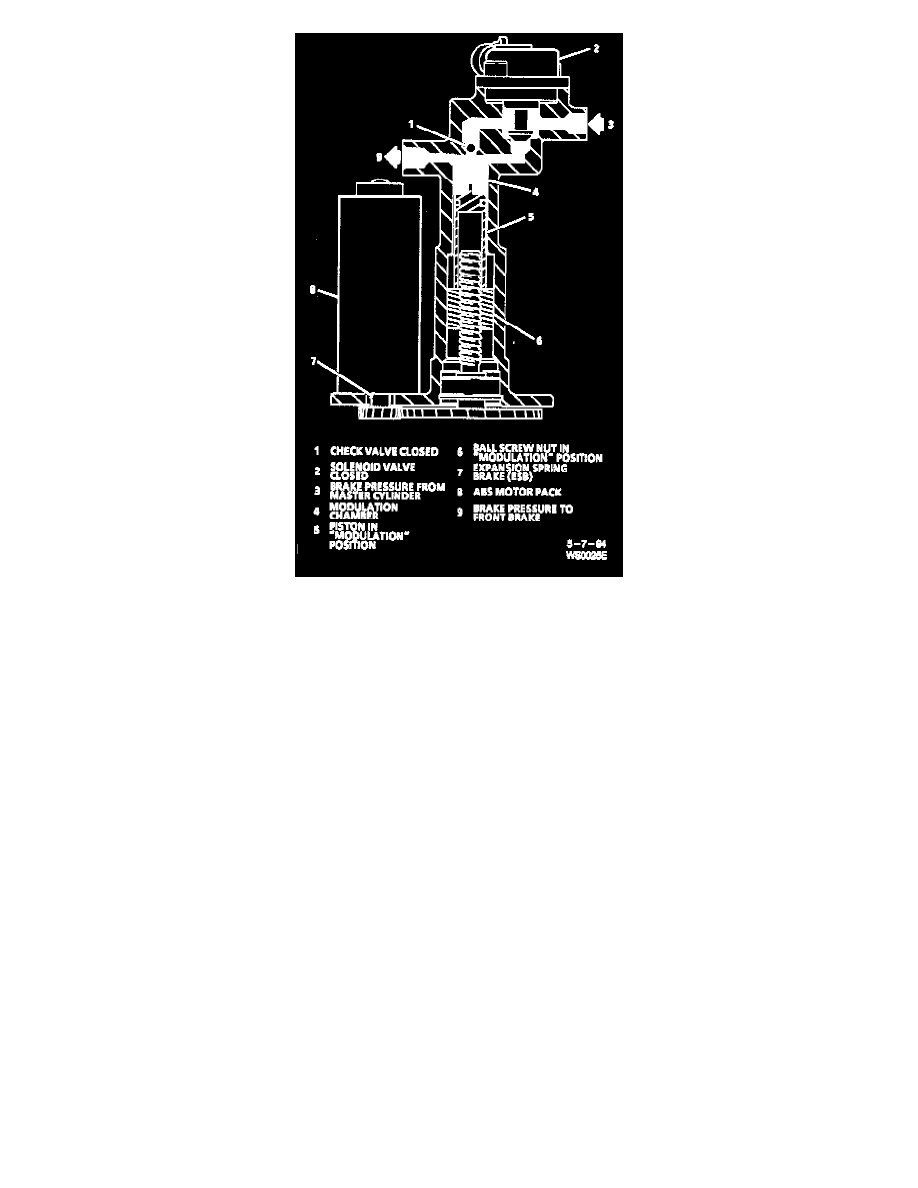Skylark L4-144 2.4L DOHC VIN T SFI (1997)

NOTE: ABS VI cannot increase the brake pressure above the master cylinder pressure applied by the driver, and cannot apply the brakes by itself.
PURPOSE
ABS VI has been designed to improve the controllability and steerability of a vehicle during braking that would cause one or more wheels to lock.
ABS VI accomplishes this objective by controlling the hydraulic pressure applied to each wheel brake. Antilock braking occurs only when the brake
switch is closed and the Electronic Brake Control Module (EBCM) determines one or more wheels is about to lose traction during braking. The
EBCM will then control the hydraulic modulator to change the brake pressures several times each second to keep the wheel(s) from locking and
provide the driver with maximum vehicle controllability. The result is greatly improved braking, enabling the driver to more easily maintain
steerability and to bring the vehicle to a controlled stop. ABS VI provides effective braking and directional control over a wide range of road surfaces
and driving conditions.
OPERATION
If any wheel(s) begins to approach lock-up, the EBCM will control the three motors and two solenoids, appropriately, to control brake pressure to the
affected wheel(s). During front wheel ABS operation, the solenoids are turned ON to isolate brake pressure path to the wheel. The EBCM then
provides controlled current to the motors to regulate the speed and amount of movement. As the motors move backwards, the piston follows the nut
downward, allowing the check valve to seat. The brake pressure to the wheel is now a function of the controlled volume within the piston chamber. To
reduce brake pressure, the motor drives the nut further downward. To reapply or increase brake pressure, the motor drives the nut and piston upward.
If ABS was entered during low brake pressure (such as on ice) and dry pavement is then encountered during reapply, the piston is driven all the way to
the top. This results in the unseating of the check valve, and a return to base brakes until sufficient brake pressure exists to cause the wheel to
approach lockup again. At this point, the ABS cycle would start again. This process can occur in less than one second if the driver is pressing firmly
on the brake pedal.
FLUID PRESSURE LIMIT
Total brake pressure during ABS is limited to the brake pressure present when ABS was entered. Also, any time wheel brake pressure exceeds the
brake pressure at the master cylinder (caused by reduced force on the brake pedal), the check valve unseats and a small volume of brake fluid is
returned to the master cylinder.
REAR CHANNEL OPERATION
The rear channel operates in a similar manner except no solenoid is used. Both rear brake pressures are controlled by the same motor and both rear
brake pressures are controlled together. If either rear wheel begins to lock, brake pressure to both rear wheels is reduced to maximize vehicle stability.
There is no rear solenoid due to the nature of the braking system. The vast majority of braking is accomplished with the front brakes. If an ABS failure
were to occur that affected the operation of the rear base brakes, a diagnostic trouble code would be stored and the EBCM would turn ON both the
